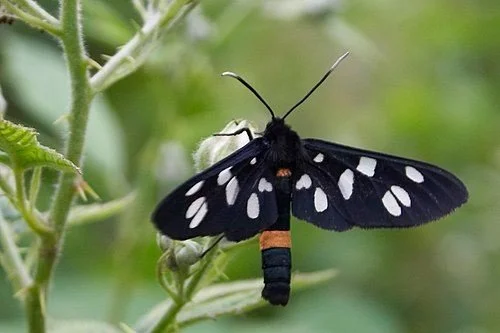Creature Feature: Niners
Written by: Zachary Mork, JNC naturalist
Welcome to month number eleven of this Creature Feature series, where we have been exploring the name origins of each month, and connecting them to creatures found in nature. With this month’s November issue, it means that this particular series is nearing its conclusion. Like many of the previous months before it, the meaning and origin behind November's name can be traced back to Roman times. The Roman calendar originally stretched for ten months which started in March, and ended in December. The months of January and February were largely ignored, likely due to lack of productivity in outdoor activities, such as agriculture or warfare.
With this in mind, November would fall as the ninth month in the Roman calendar. The evidence for this is still present today, as “novem” is the Latin word for “nine”. To commemorate this month, this edition of Creature Feature shall explore the world, finding examples of animals that have the number “nine” in their name as well!
Nine-banded armadillo (Dasypus novemcinctus)
A native of the Americas, the nine-banded armadillo is described as being solitary, nocturnal, and an insectivore that feeds on insects such as ants and termites. To spot this creature in the United States, one would have to travel to warmer climates, as their range stretches in an East-West direction from Florida and the Carolinas, to Texas and the southern Great Plains. Unlike some of their closer relatives, this species of armadillo is unable to roll itself into a ball, but they do have bony plates for defense, known as scutes, that are covered in keratin - the same material that makes up horns or fingernails. Home for them is in the form of a burrow, and will likely make several of them within a given area.
Ninespine stickleback (Pungitius pungitius)
This small fish of streams, lakes, and rivers is found in many freshwater systems, including the Great Lakes basin. At roughly four inches in length, they swim around in areas with plenty of vegetation and feed on small insects and invertebrates. Despite their name, the number of spines can range anywhere between seven and twelve. Unlike other fish, sticklebacks lack scales, though some do have those bony scute structures located around the body. All parental care is completed by the male, as the female's only role is the laying of the eggs. Parental duties include nest building, and the defence of both eggs and hatchlings until they are ready to leave the nest and go out on their own.
Nine-spotted moth (Amata phegea)
Admittedly, it's a little challenging finding enough examples of creatures with a specific number in their common names. However, we do have this example that comes to us all the way from southern Europe. The nine-spotted moth is a member of the Eribidae family of moths. This same family includes more familiar species, such as tiger moths and wooly bear caterpillars. The number of white spots are variable, but on average, there are six spots on each upper wing, and three spots on each hindwing, yielding a total count of nine spots for each side of the moth. Other physical characteristics include a yellow band around the abdomen, and white-tipped antennae. The caterpillars cocoon in May. They end their month by emerging as moths, where they will fly around open woods and fields during the daylight of the summer months.
Nine-banded armadillo
Ninespine stickleback
Nine-spotted moth



